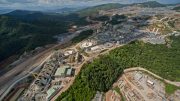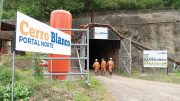Advantage Lithium (TSXV: AAL) released the results of a prefeasibility study on its 75%-owned Cauchari project in northern Argentina’s Jujuy province.
The prefeasibility study, announced in October, outlined an operation producing 25,000 tonnes per year of battery-grade lithium carbonate over a 30-year mine life.
Preproduction capital is estimated at US$446 million, including a 20% contingency. Steady-state operating costs are forecast at US$3,560 per tonne battery-grade lithium carbonate.
Based on a weighted average price of US$12,166 per tonne battery-grade lithium carbonate over the life of the operation, the study estimates a US$671-million base case, after-tax net present value at an 8% discount rate, with a 20.9% internal rate of return.
Orocobre (TSX: ORL), which developed and now operates the Olaroz lithium facility, 20 km north of Cauchari, is Advantage Lithium’s largest shareholder, with 33% of Advantage Lithium’s common shares and a 25% interest in the Cauchari joint venture.
Last year, Orocobre announced plans for an expansion at Olaroz of 25,000 tonnes per year for total production of 42,500 tonnes lithium carbonate per year (proposing 17,500 tonnes per year of battery-grade lithium carbonate and 25,000 tonnes per year of primary-grade lithium carbonate). Olaroz is producing battery-grade lithium carbonate from stage one. Stage-two commissioning is expected in the first half of 2021 at an estimated US$295-million capital cost, including contingency.
Matthew O’Keefe of Cantor Fitzgerald remains cautious about the near-term progress of the 278 sq. km Cauchari project. “We continue to see Orocobre as the key driver in moving the project forward,” the analyst says in an Oct. 22 research note to clients. “And while their balance sheet appears to be healthy, the company has current expansion commitments with its phase-two expansion project at Olaroz.”

Advantage Lithium Corp. and Orocobre’s Cauchari lithium property in Argentina. Photo credit: Advantage Lithium.
The mining analyst notes that he doesn’t expect Orocobre “to be in a rush to start the development of Cauchari,” given the “steep capital and management commitment and the ongoing weakness in the lithium market.”
Based on Cauchari’s prefeasibility study, the project could start as early as 2022, with a three-year ramp-up to a steady production rate of 25,000 tonnes per year of battery-grade lithium carbonate.
The study was prepared by Worley, Chile S.A., and outlines proven and probable mineral reserves of 1.02 million tonnes of lithium carbonate equivalent (LCE) at a concentration of 480 milligrams per litre (mg/l) lithium.
Reserves are based on a measured and indicated resource released in March of 4.8 million tonnes of LCE at 476 mg/l. Additional inferred resources stand at 1.5 million tonnes LCE at 473 mg/l lithium.
The processing design at Cauchari is based on pumping the lithium-rich brine to surface and diversion to ponds for solar evaporation. According to the company, the magnesium content in the brine is relatively low, so it can be removed with slaked lime as magnesium hydroxide. During evaporation, certain salts would be crystallized to generate a lithium solution for lithium carbonate precipitation. This solution would be polished to remove metals before being recrystallized to make a battery-grade product.
The next steps for Advantage Lithium will include finalizing a strategic partner and preparing a feasibility study. Advantage Lithium has also submitted an environmental impact assessment for the project.
Advantage Lithium started exploration work on the property in 2017.
Elsewhere in Argentina, the company holds three exploration properties and a royalty.
Its 107 sq. km Antofalla property, 80 km away from a railhead, is located on the northern tip of the Antofalla salar, where geological interpretation indicates a deep basin with a lithium- and potassium-bearing aquifer.
Its Incahuasi property is 250 km from the port of Antofagasta. Limited surface sampling on the 98 sq. km property suggests the presence of a low lithium but high potash salar target, with high free calcium and magnesium.
Lastly, its 213 sq. km Guayatayoc property is 80 km east of Cauchari. Limited surface sampling there suggests the presence of an aquifer richer in potash relative to lithium.
Advantage Lithium also holds a 0.5% royalty on a 336 sq. km land package in the Salinas Grandes salar in Argentina, which is 85% owned by LSC Lithium (TSXV: LSC).
The company’s market capitalization stands at $33 million, based on 159 million common shares outstanding that trade at 20.5¢. Over the last year, the company’s shares have traded in a range of 18.5¢ to 72¢.






Be the first to comment on "Advantage Lithium completes study on Cauchari"